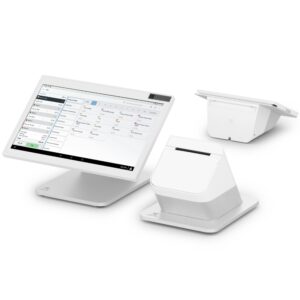How to Check Digital Vernier Caliper Accuracy | Step-by-Step Test Guide
Accurate measurements are critical to any measurement instrument. Whether you are an engineer, technician, machinist, or just a student, it is critical for whatever measurement instrument you are using to give you correct readings. When your digital vernier caliper is accurate, every time you work on a project, it will become more reliable and efficient and have less possible error.
This guide will explain how to conduct an accuracy test and the simple verification steps that follow and can be completed in a matter of minutes. We will explain professional calibration methods and maintenance steps to follow in order to maintain your measuring device’s accurate reading for the long term. Additionally, we will take a look at the digital vernier caliper least count and its influence on the stability of measured values, and what to do in the event that your measurements are inconsistent.
Why Accuracy Testing Is Important
In manufacturing, machining, fabrication, and quality inspection, even a small error in measurement—sometimes as small as 0.02 mm—can create major deviations in final output. An inaccurate measuring tool affects:
- Component compatibility
- Tolerance limits
- Quality control
- Safety
- Workflow efficiency
This is why testing the accuracy of your digital vernier caliper at regular intervals is a smart habit.
Understand the Basics: Least Count & Error Range
Before diving into the accuracy test, you need to understand two important terms:
1. Least Count
The digital vernier caliper least count determines the smallest measurement the instrument can display. For most models, this is 0.01 mm or 0.0005 inch.
A lower least count means a more precise reading.
2. Maximum Permissible Error (MPE)
Most tools have ±0.02 mm or ±0.03 mm error tolerance.
This is the acceptable range within which the instrument is still considered accurate.
Step-by-Step Accuracy Test (Beginner Friendly)
Here is a simple and effective method to check if your digital vernier caliper is giving accurate readings.
Step 1: Clean the Surfaces
Before testing, clean:
- Measuring jaws
- Depth rod
- Main beam
- Object you’re measuring
Dust or oil can affect accuracy. Even a tiny metal chip stuck between jaws can create a 0.02 mm error.
Step 2: Zero Error Test
- Close the jaws fully
- Press the ZERO button
- Ensure display reads 0.00 mm
If it doesn’t reset to zero, clean again and retry.
A persistent 0.01–0.02 mm offset indicates minor zero error.
Step 3: Outside Jaw Accuracy Test
Measure a known reference standard such as:
- Gauge blocks
- Test rod
- Calibration ring
If you don’t have industrial gauges, you can test using objects like:
- A 10 mm drill bit (standard diameter)
- A 20 mm gauge slip if available
Check if the reading matches the exact reference size.
Step 4: Inside Jaw Accuracy Test
Use inside jaws to measure:
- A hole diameter
- A ring gauge
- A pipe’s inner diameter
Again, compare reading with a known dimension.
Step 5: Depth Accuracy Test
Extend the depth rod and measure:
- A height gauge block
- A machined slot depth
- A straight, clean hole
The value should be close to the reference depth with minimal acceptable variation.
Step 6: Repeatability Test
Repeat the same measurement 5 times.
If your digital vernier caliper shows different readings every time, it has repeatability issues.
Possible causes:
- Worn jaws
- Loose sliding roller
- Battery fluctuation
- Internal sensor issues
Step 7: Parallelism & Jaw Wear Check
Close the jaws and hold the caliper against a light source.
If you can see a visible gap, the jaws aren’t parallel anymore, causing incorrect readings.
This happens mostly in cheaper models or after heavy industrial use.
Professional Calibration Method
If you’re using your digital vernier caliper in a high-precision industry (CNC, tool room, inspection lab), you should perform calibration using:
- Slip gauge set
- Certified gauge blocks
- Calibration master set
- Digital calibration stand
Calibration certificate from an NABL-accredited center is recommended every 6–12 months.
Common Accuracy Problems & Their Fixes
1. Random Fluctuations on Display
Cause: Weak battery
Fix: Replace with a good-quality LR44 or SR44 battery.
2. Inconsistent Readings
Cause: Dirt inside slider
Fix: Clean with IPA alcohol solution.
3. Sticky Movement
Cause: Dust or burrs on beam
Fix: Clean the track; avoid oiling.
4. Incorrect Zero
Cause: Worn or misaligned jaws
Fix: Professional repair needed.
Understanding Price vs Accuracy
Many users assume higher cost means more accuracy. But that’s not always true.
Today, even affordable tools deliver excellent accuracy. The digital vernier caliper price depends on:
- Material quality
- Accuracy class
- Brand reputation
- Jaw hardness
- Battery quality
- LCD display type
If you’re buying a longer model, such as 12-inch calipers, the digital vernier caliper 300 mm price will naturally be higher compared to 150 mm models.
Choosing the Right Digital Caliper
Look for:
- Hardened stainless steel body
- Reliable brand
- ±0.02 mm accuracy
- Smooth slider
- Strong battery backup
- IP54 water/dust resistance
When used correctly, a digital vernier can last for years with consistent accuracy.
Maintenance Tips for Long-Term Accuracy
- Always clean jaws after use
- Avoid dropping or knocking the instrument
- Store in a protective case
- Keep away from magnets
- Calibrate periodically
- Don’t apply excessive force while measuring
With these habits, your digital vernier caliper stays accurate and reliable.
Conclusion: Why Regular Accuracy Testing Matters
Accuracy testing ensures your measurement results stay dependable, whether you’re machining a part, inspecting materials, or teaching measurement fundamentals. By performing simple checks at home or in your workshop, you can instantly verify whether your digital vernier caliper is correct or needs attention.
If you’re looking for high-quality, durable, and truly reliable measuring tools, Jaibros is a trusted brand known for precision engineering products. They offer a wide range of calipers, micrometers, and measurement instruments suitable for both industrial and educational use.
FAQs
- How do I know if my digital caliper is accurate?
Measure a known standard like a gauge block or drill bit. If the reading matches within the permissible error, it’s accurate.
- How often should I calibrate a digital vernier caliper?
For industrial use, calibrate every 6–12 months. For hobby use, once a year is enough.
- What is the least count of a digital vernier caliper?
Most models have a digital vernier caliper least count of 0.01 mm or 0.0005 inch.
- Why does my caliper fluctuate while measuring?
Weak battery, dirt on the beam, or a worn slider can cause display fluctuations.
- Can I repair a digital caliper if the jaws are worn?
Minor misalignment can be corrected, but major jaw wear usually requires replacement.




